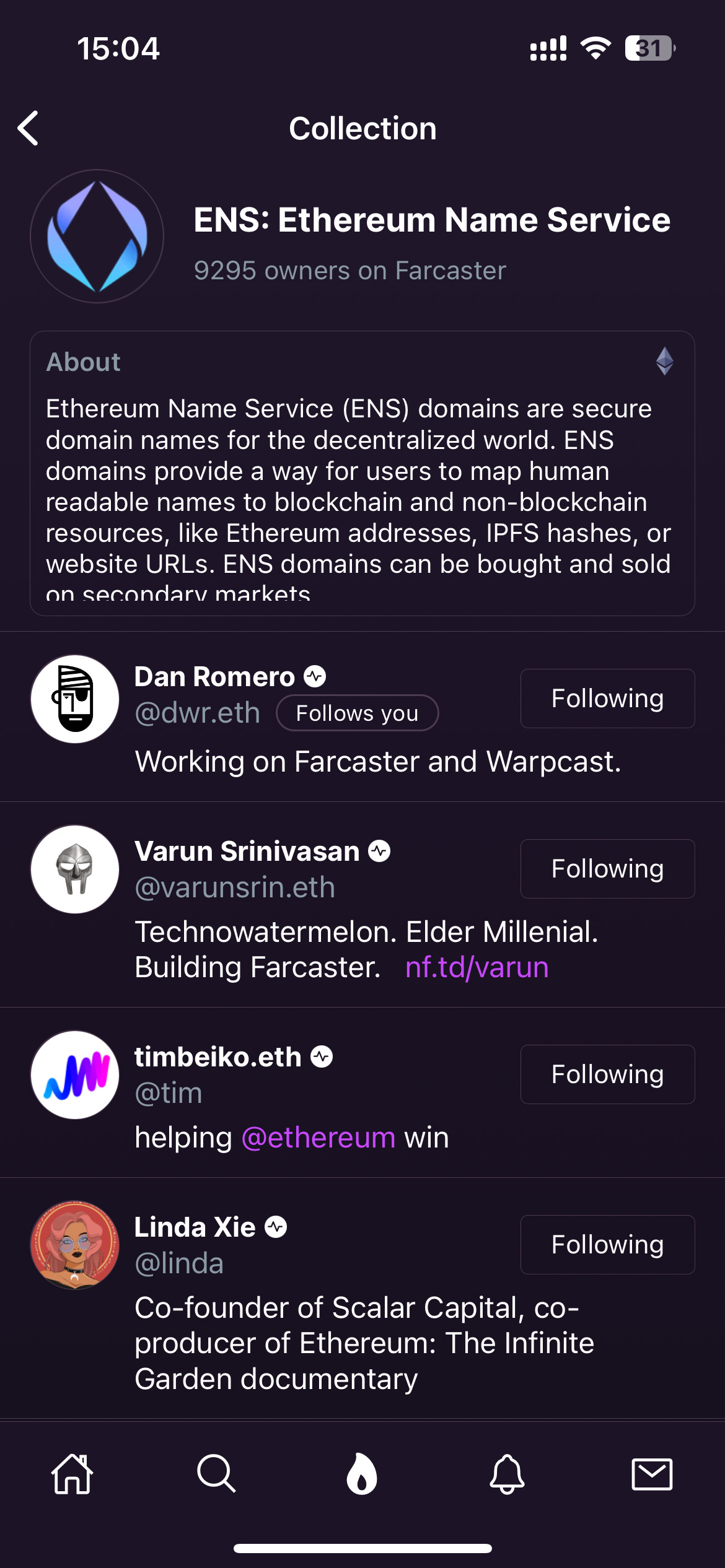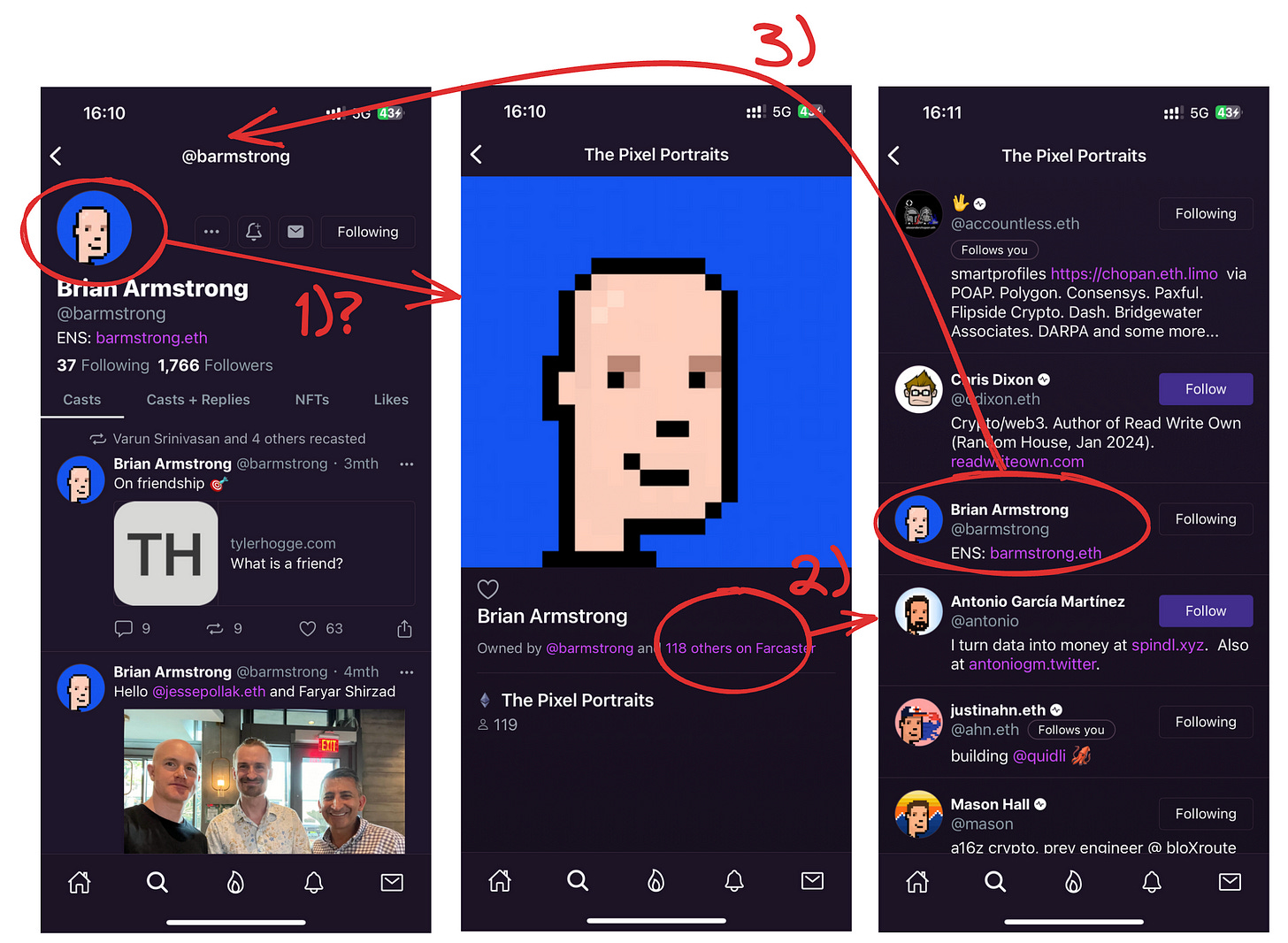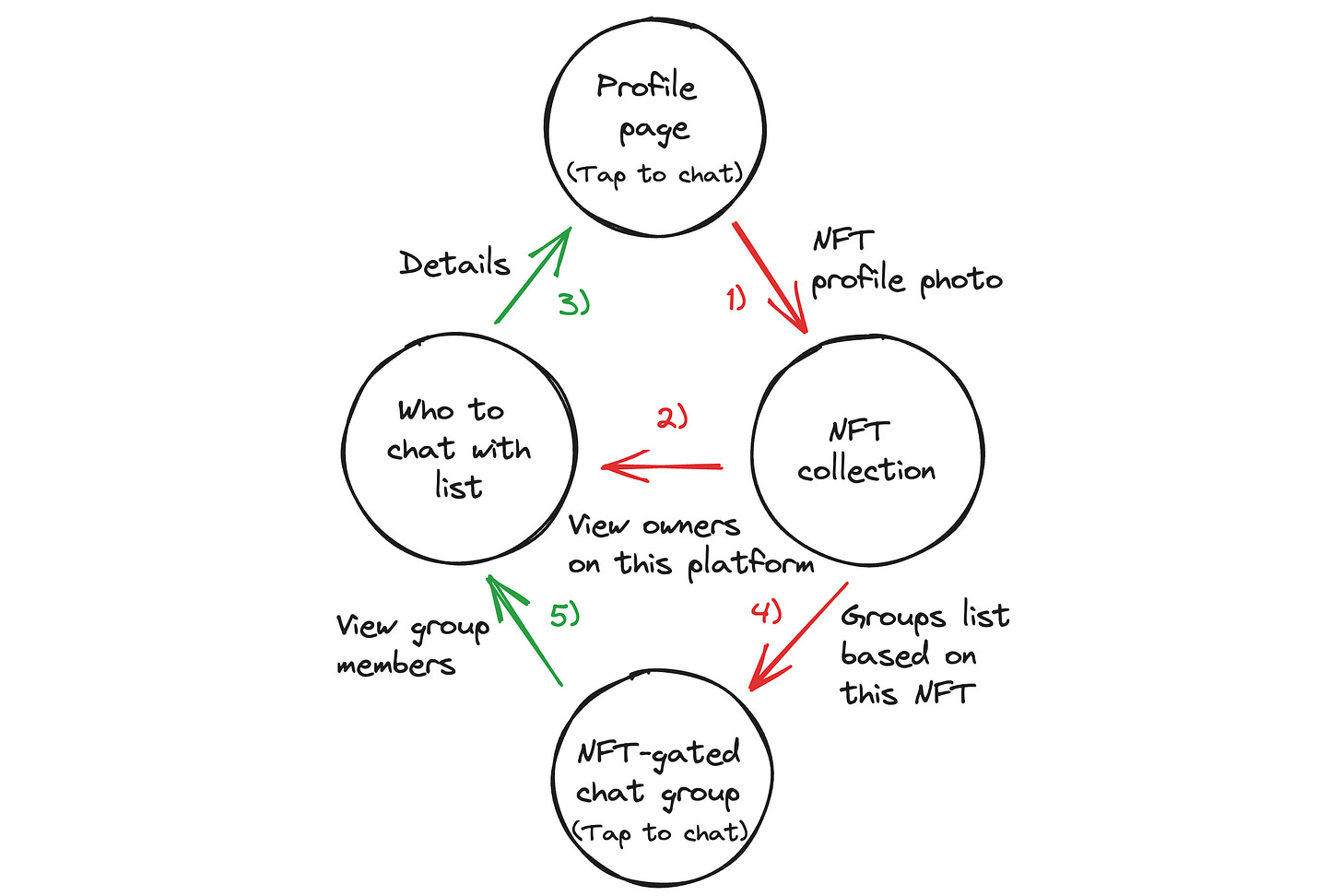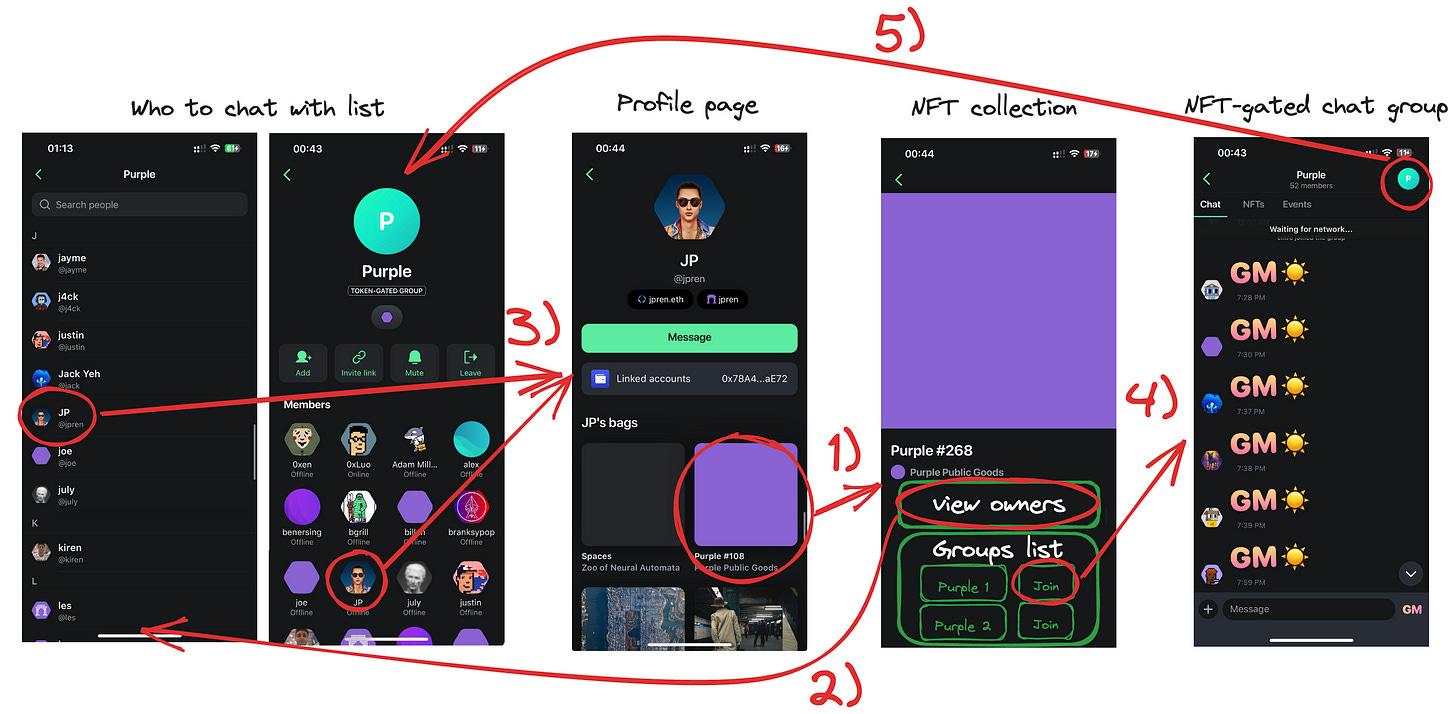
The Close-Loop of Token-Based Connections
Some thoughts about Web3 social platforms connected with tokens
"Hell is a place where nothing connects with nothing." -- T.S.Eliot, Introduction to Dante's Inferno.
Social platforms primarily consist of social media and messaging apps. Social medias are predominantly about broadcasting—sharing your thoughts, images, or videos with the world. (While some may have a one-on-one messaging feature, it is relatively basic in functionality). Messaging apps, on the other hand, are about conversations—typically with friends or friends of friends, especially in group settings where you can engage with multiple people.
What makes social platforms in the web3 world special? One important aspect, in my opinion, is the native support for token-based social connections, where people holding the same NFTs or FTs can discover each other.
Who to follow?
When we join a new social media platform, we often face the question, "Who to follow?" Typically, the platform recommends users with a large number of followers, making it easy to find KOLs. Besides, in the web3 world, our crypto wallet should have some JPGs, and we may want to connect with others who hold the same NFTs. (Although there should be fewer people with such thoughts during the NFT bear market.)
On traditional web2 social platforms, it can be difficult to find people with the same NFTs. Although some users may have NFT-like profile photos, it is unclear whether they actually own those NFTs. Even Twitter's NFT feature is only used by a small fraction of people. This is where web2-web3 middleware like Mask Network can be helpful in enabling people to discover who is using NFTs as avatars.
Furthermore, let's shift our focus to web3 native social networks, such as Farcaster. One excellent aspect of Farcaster's client, Warpcast, is that when I click on any NFT collection interface, I can directly see who owns NFTs of this collection on the platform. This feature allows us to foster the NFT community culture and enables users with the same NFTs to quickly connect with each other. It truly embodies the web3 native spirit and is one of the reasons why I love Farcaster.

However, I've noticed that although Farcaster supports users setting NFTs as their profile pictures, we cannot click on these profile pictures to view which NFT collection they belong to. For instance, when I come across someone with a cool NFT avatar, I want to know which specific NFT they are using. Currently, I can only search through their NFT bags to find the matching NFT, but it's inconvenient. This limitation could be addressed by allowing users to click on the avatar to view the associated NFT collection, along with the list of all owners of this collection. If I find them interesting, I can choose to follow them. This would create a closed loop of social media based on NFTs, as depicted in the diagram below.

Farcaster has already implemented features 2) and 3) (green arrows), but it hasn't implemented feature 1) (red arrow). However, interestingly, Twitter Blue has actually achieved this functionality by allowing users to set cool hexagonal NFT avatars (Sadly, even after clicking to view the detailed information of an NFT, you still can't see other people on Twitter(X) who own the same NFT collection). On the other hand, blockchain-based platforms like Lenster and Warpcast have not implemented this feature yet.

Warpcast is just one small step away from achieving this closed loop, but it seems that this feature isn't of high interest to many people.
Who to chat with?
Such a closed loop also exists in messaging platforms.
When you join a new messaging app, you also encounter the question, "Who to chat with?" Some web2 messaging apps, such as WhatsApp and Telegram, utilize your contact list to recommend friends. On the other hand, certain web3 messaging apps, built on messaging protocols (e.g. XMTP, dm3) and some centralized services (e.g. Blockscan Chat) , which support direct peer-to-peer communication via a blockchian address (although it's unlikely that many people consistently use such apps, as they are more suitable as extensions for wallet apps). Then what about group chats?
In recent years, there has been a rise in messaging apps that claim to be token-gated, such as Frens, Debox, and Chirp. These apps have a notable feature: token-gated group chats. This means that only individuals who hold a specific NFT or FT can join these groups. It's a token-based approach that aligns well with the Web3 ethos, fostering social liquidity aggregation. By owning a particular NFT, you can easily engage in group conversations with other NFT holders, creating a gathering of like-minded individuals. Furthermore, this approach facilitates the creation of knowledge-sharing groups where KOLs can offer paid content based on NFT ownership.
Let's take Frens within the Farcaster ecosystem as an example (currently in the testing phase). After going through permissionless NFT ownership authentication, I can join an NFT-gated group and initiate group chats with others who hold the same NFT. I can view the group members and choose to have one-on-one conversations with those who pique my interest. However, at present, there is no way to view NFT collections directly in my NFT bags and discover all platform users who hold NFTs from these collections pages, allowing for individual chats with them. Similarly, clicking on someone's NFT avatar doesn't provide information about the NFT collection it belongs to.
We can also illustrate these processes with a diagram below. Green arrows represent achieved processes by frens, while red arrows indicate processes not yet acquired. Implementing this token-based connection loop should enhance the Frens' experience. Perhaps my thoughts are just some noise, and product managers might have their own areas of focus, but I believe there should be someone who can get my point.


Conclusion
In fact, what I'm referring to as the "close-loop of connections" is a set of insignificant features, but I believe that implementing all these aspects is what truly distinguishes web3 social: the ability to be connected with tokens.
Although we are currently in an NFT bear market, I believe that NFT community culture will not disappear. NFTs can serve as a medium for establishing connections between individuals. The NFT community is comparable to mycelium—the interconnected fungal network that forms a community in the same way that tree roots interconnect with each other. Therefore, social platforms are also required to facilitate the accumulation of social relationships through NFTs for connection and interaction. (Of course, the same principle applies to FT communities represented by meme coins.) This is why I hope these web3 social platforms can enhance token-based social connection functionalities.
If there's any product manager who comes across my article and agrees with some of my viewpoints, let's have a high five.



